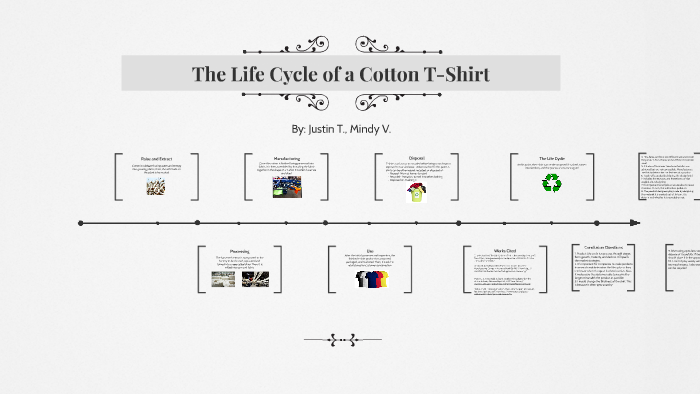L.C.OF A T-SHIRT
The Life Cycle of a T-shirt
Stage 1
There are 5 major stages in the lifecycle of any garment: material, production, shipping, use and disposal.

According to a study published in 2009 in the UK, the material, production and transport phases of one t-shirt weighing approximately 6 ounces produced in India uses: 700 gallons of water, 22 pounds of fertilizers, 1.01 pounds of pesticides and 1.2 pounds of fossil fuels. Just in one T-shirt.
The material phase of the lifecycle involves farming, irrigating, fertilizing, harvesting and ginning. While cotton is a natural fiber and ultimately not as harmful to the environment as manmade fibers like polyester, it still takes a toll in the material and production phases.
China, India and the US are the three largest producers of cotton in the world, and the US is the world's largest exporter of cotton. Commercial cotton farming uses an immense amount of water, and the use of pesticides is rampant across the globe, especially when it comes to cotton farming. According to the EPA, studies have shown that farmers spend an average of $4.1 billion on pesticides annually. Furthermore, 25% of all pesticides used in the United States are used on cotton crops.
Once the cotton is grown and harvested, so begins the next stage, the production phase.
Σχόλια
Δημοσίευση σχολίου